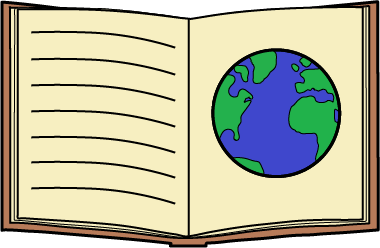
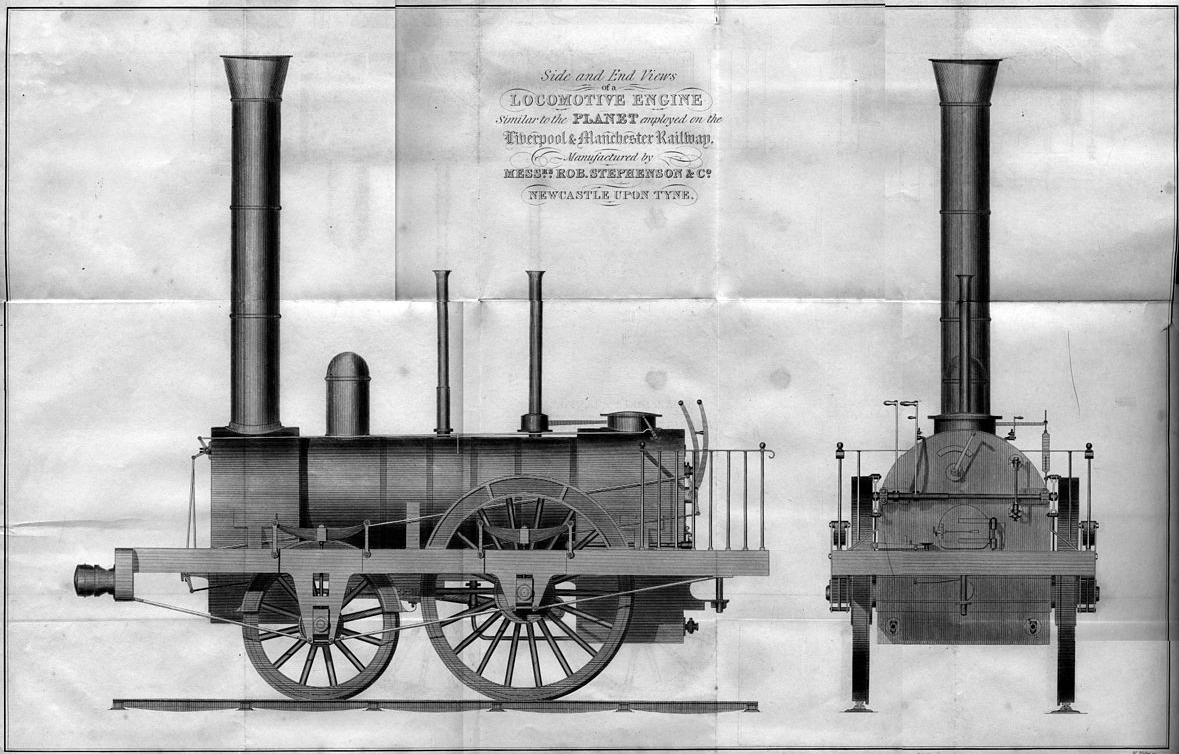
The coming of steam locomotives changed how life was lived in America. It changed the way people traveled. With this new invention, steam-powered engines could be used on a railroad car for travel and for moving things. Travel became easier, and more people could do it. With this invention there also came the need to build railroad tracks.
Railroads helped to save time and money. An example of this was the Mohawk and Hudson Railroad that was built in 1831. Before this railroad, people would make this trip by canal. The canal trip was 40 miles long and took an entire day. When the Mohawk and Hudson Railroad line was finished, it made the trip much faster and shorter. The new railroad shortened the distance to 17 miles. The trip could now be made in less than an hour.
The Baltimore and Ohio Railroad Company was the first chartered railroad company in the country. The railroad connected the city with places to the west. Baltimore was the third largest city in the country. Building a railroad helped make them more competitive with New York City. The Baltimore and Ohio Railroad was started in 1828. An interesting fact was that Charles Carroll turned the first shovel in the construction. Carroll was a signer of the Declaration of Independence, and at 91, he was the last living signer.
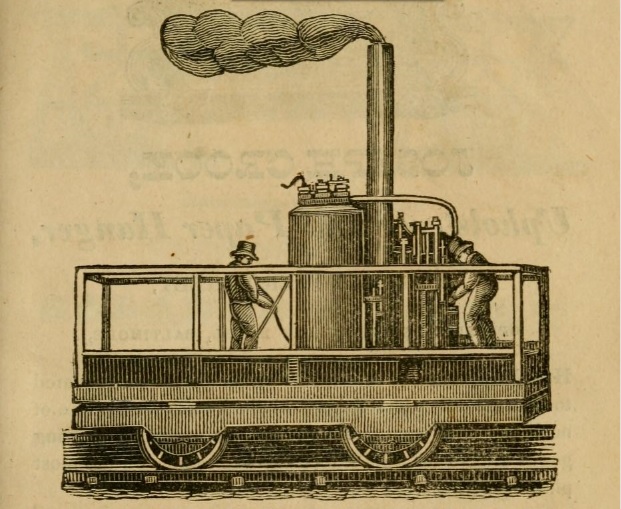
One of America's first steam locomotives was built by the Baltimore and Ohio Railroad Company. The name of the train was the "Tom Thumb." They tested it out in 1830. While testing it out, the owner was challenged to a race with a horse-drawn train. The "Tom Thumb" started out faster and took the lead, but then it broke down. It got a broken belt. The horse-drawn train won the race. Owners of the railroad company saw a good deal of promise in the future of the steam-powered train. As it turned out, they were right. The locomotive or train went on to be very successful.
When the "Tom Thumb" lost the race there were only 23 miles of tracks in this country.
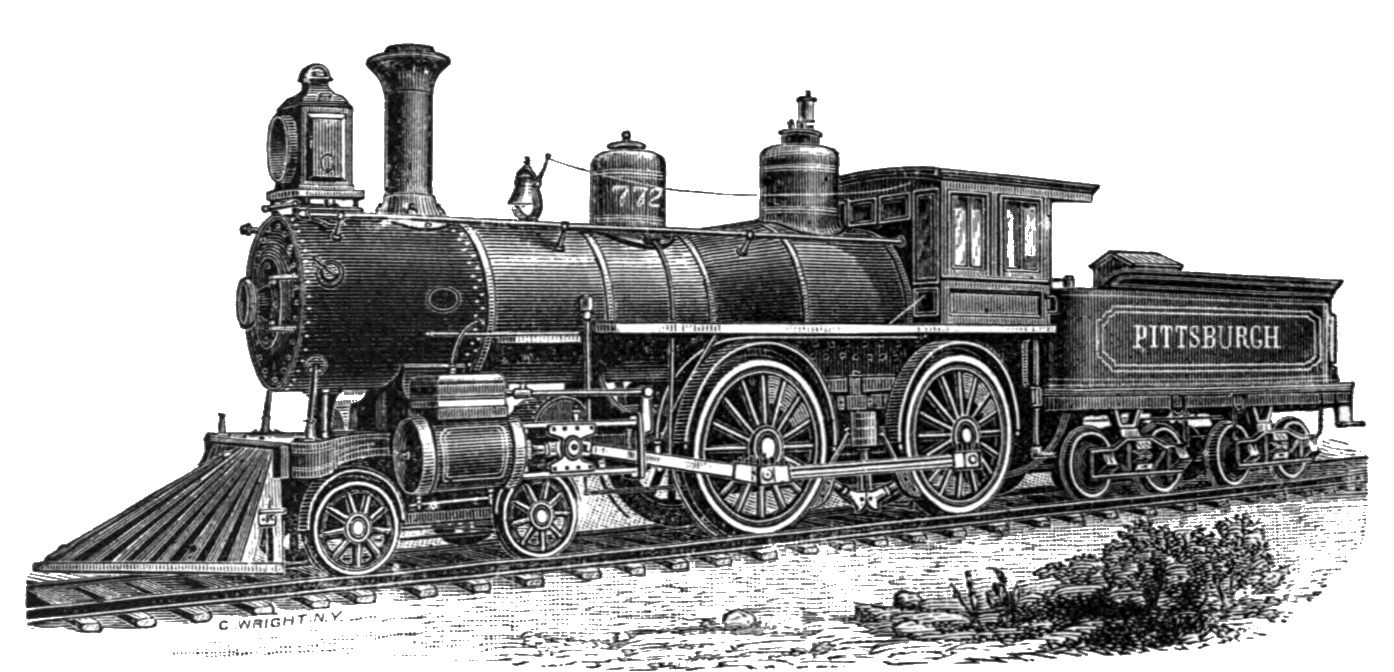
Twenty years later there were 9,000 miles of track. In 1861 there were 30,000 miles of track. In 1916, there were over 250,000 miles of tracks. Growth of the railroads was fast. Railroads brought more business to towns and states. They brought more industry. The trains brought more expansion. Our country continued to grow and spread out quickly.
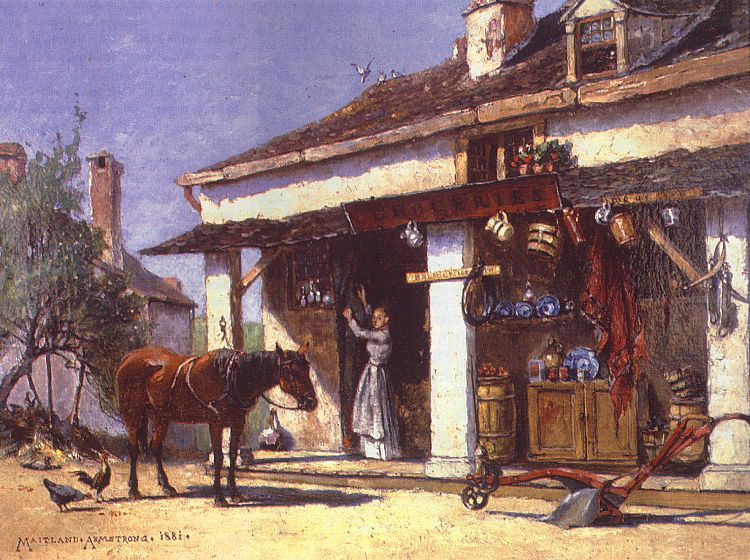
However, not everyone was happy with the railroads. Some companies lost money. Trains and railroads put them out of business. Companies that were affected could be tavern owners, inn keepers, stagecoach drivers, general stores, and canal companies. Can you think of any ways that the locomotive might have put some people out of work?
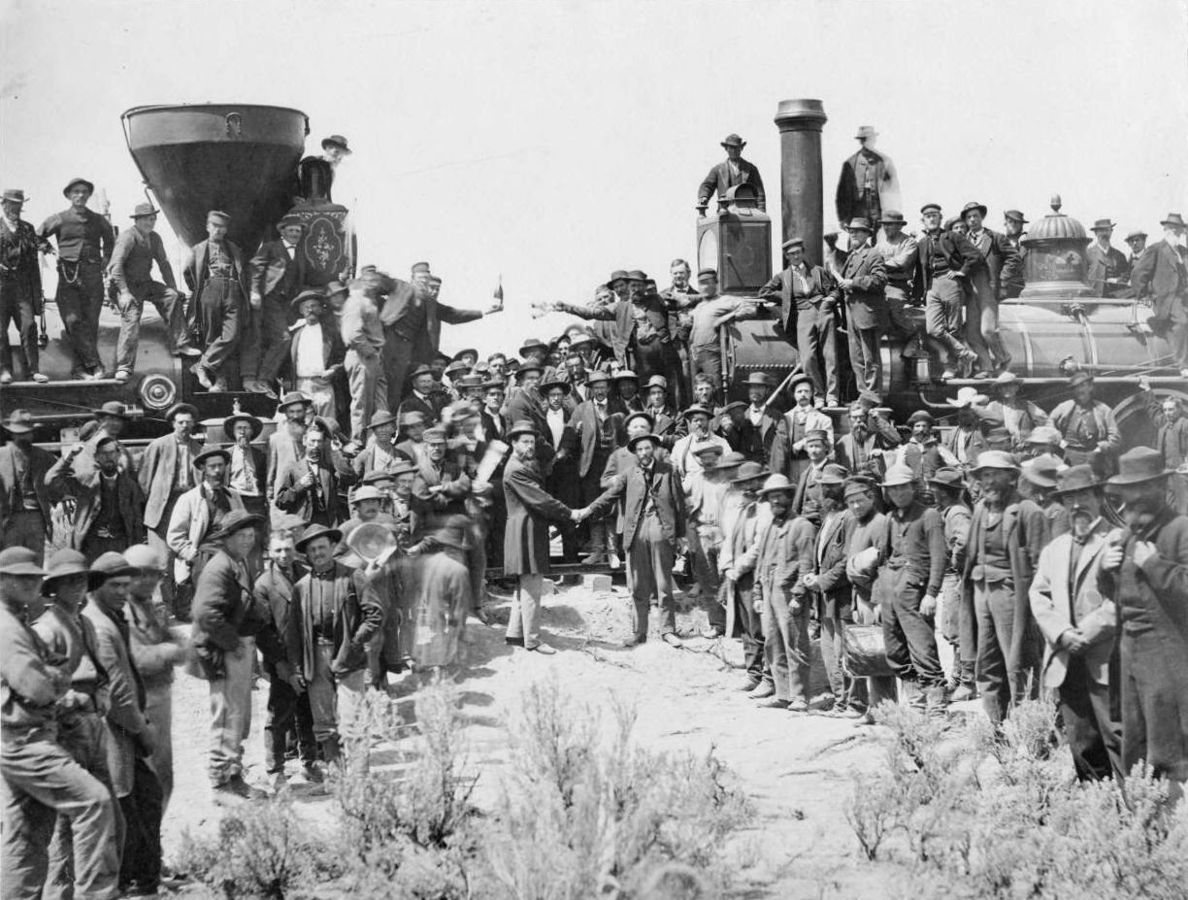
In 1869 the transcontinental railroad was built. It linked the west coast with the rest of the country. People could ride a train all of the way across. This had a big effect on westward movement. It changed many things.
Two railroads built the tracks for the transcontinental railroad. The Central Pacific built rails going east from San Francisco, and the Union Pacific started from Omaha and went west. They met at Promontory Summit, Utah, on May 10.
It took much work to build a railroad across the country. Twenty thousand men worked on it. There were almost 240,000 man hours of labor. Many men got jobs. Many immigrant workers were hired. The Union Pacific hired mostly Irish men. The Central Pacific hired many Chinese workers.
As more steam locomotives and rails were built, the effects of transportation spread. Westward expansion increased. The country kept growing and expanding west.

Text Credits:
http://www.historytoday.com/richard-cavendish/george-stephensons-first-steam-locomotive;
http://www.history.com/news/history-lists/8-things-you-may-not-know-about-trains;
https://www.nps.gov/gosp/faqs.htm (Promontory Summit and golden spike)